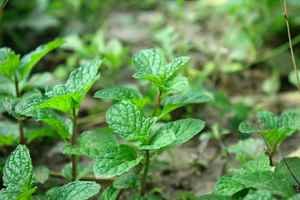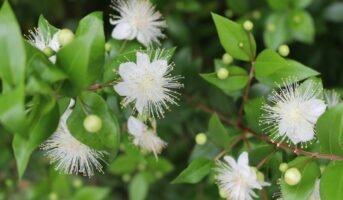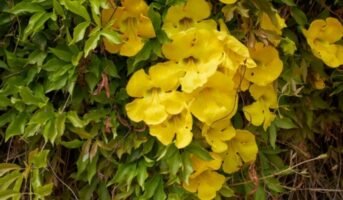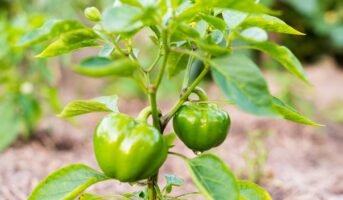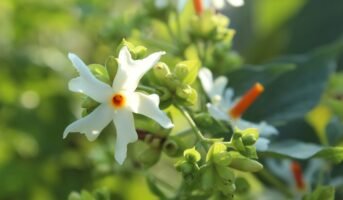Peppermint or Mentha Piperita is a herb that is a member of the Lamiaceae family. It is simple to cultivate peppermint plants in your outdoor garden bed or an indoor garden, and doing so will reward you with a bountiful harvest of this crisp and tangy herb.
Not only can mint impart a delicious and fragrant flavour to meals, but it also has medical uses, such as easing headache pain and assisting digestion. This guide is indispensable if you’ve decided to cultivate peppermint plants. Pepper mint leaves are best used fresh,
Peppermint plant: Key facts
| Plant Type | Perennial herb |
| Native to | Mediterranean |
| Family | Lamiaceae |
| Genus | Mentha |
| Species | x piperita |
| Season | Spring-fall |
| Maintenance | Low |
| Soil Type | Clay, loamy, clay |
| Soil pH | 6.0-7.5 |
| Soil Drainage | Well-draining |
| Exposure | Full sunshine to part shade |
| Growth Rate | Fast |
| Spacing | 18-24 inches |
| Height | 1-3 feet |
| Spread | 2 feet (vigorous) |
| Planting Depth | Similar depth to the root ball |
| Water Needs | High |
| Common Pests | Alfalfa looper, cabbage looper, armyworm, cutworm, flea beetles, two spotted spider mites, nematodes, |
| Tolerance | Frost |
| Attracts | Butterflies, bees and other pollinators |
| Companion Planting | Broccoli, eggplant, cabbage, carrots, lettuce, peas, peppers |
| Avoid Planting With | Potatoes |
| Common Disease | Mint rust, verticillium wilt, powdery mildew |
Peppermint plant: Features
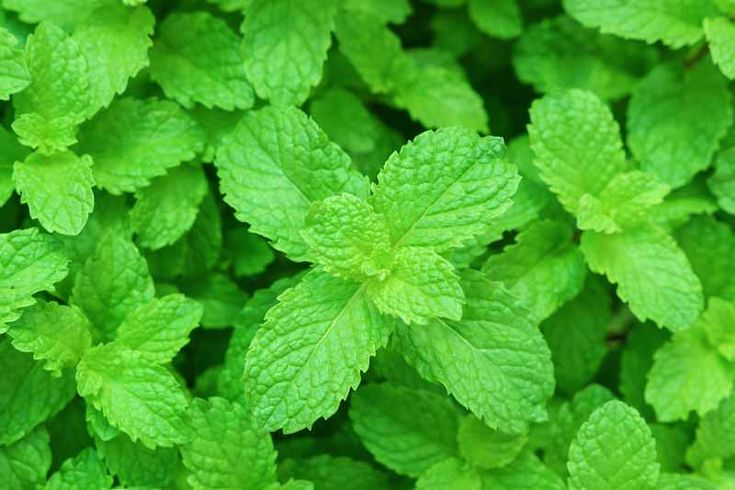
Source: Pinterest
When the green leaves of peppermint are chewed or crushed, it releases a refreshing, cold, peppery scent and flavour. Although it is commonly cultivated in containers due to its invasive nature, peppermint is a simple plant to cultivate and manage in your kitchen garden.
Pinkish-purple flowers develop in whorls around the peppermint plant’s stem throughout the summer, and the plant can reach a height of three feet according to the circumstances. In addition to its application in medication, it is also a common ingredient in sweets and desserts.
Best time to grow peppermint plant
Because mint is a robust and aggressive plant that may thrive in a wide range of temperatures, you may choose to plant your peppermint plant indoors in a container rather than in your kitchen garden.
Planting peppermint should occur in the early spring after the last chance of frost has passed from the previous winter. It can withstand brief spells of freezing temperatures, but it won’t be able to endure temperatures that remain below freezing for a long period of time.
Types of Peppermint plants to grow
Banana mint
Grapefruit mint
Chocolate mint
Moroccan mint
Strawberry mint
Curly mint
English Lamb
Pineapple mint
How to grow and care for Peppermint plants?
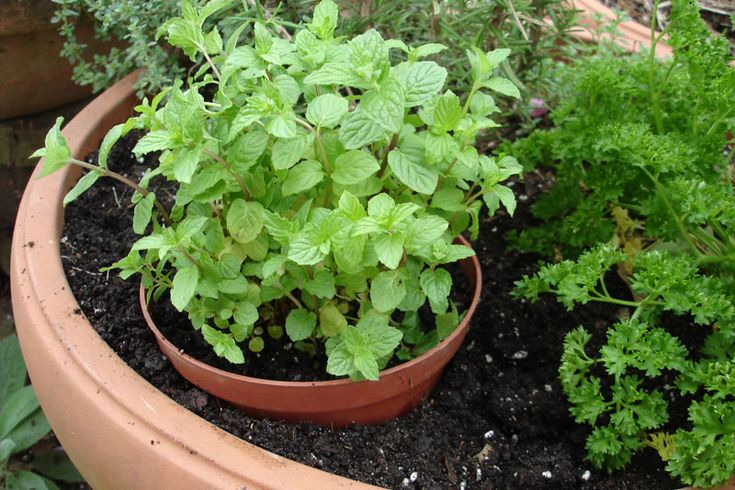
Source: Pinterest
Propagating peppermint plants via cuttings, as opposed to growing them from seeds, results in a more rapid increase in plant size. To plant and cultivate fresh peppermint at home, follow the steps below.
-
Prepare the stem cutting
Peppermint plants can be easily propagated by cutting a five- to six-inch section from an established plant and planting it. Take the bottom 2 inches and strip off the leaves. Put the chopped stem in a water container and put it in the sunlight. It’s ready to be planted once it grows a root system that seems to be a couple of inches long.
Where to plant and place your Peppermint plants?
Select your container
Because peppermint tends to quickly take over a vegetable garden once it has been established, many gardeners opt to cultivate it in containers instead. Because peppermint grows best in soil that is kept continuously moist, a container made of plastic is the best choice for maintaining the soil’s moisture level.
Fill the container with soil
Put some damp potting soil in the container you have chosen. If you are cultivating peppermint plants inside, you should not use compost or emulsion as fertiliser. The soil can retain moisture better if a covering of mulch is applied to it. Put your containers in a spot where they will be exposed to the sun for the full day.
Put your peppermint stems
Plant each cutting with great care in the rich soil, leaving at least 25 centimetres of distance between each stem.
Water peppermint consistently
In contrast to most other types of plants, you should keep the soil around peppermint plants from going completely dry in between waterings. The soil must always stay moist. Be sure to give your peppermint plant water each day.
Harvest your peppermint
Peppermint is ready to be picked when the leaves have developed a pleasant aroma. Squeeze or clip off the individual leaves you want to harvest if you only need a little bit. Slash the plant all the way to the ground, beyond the first pair of leaves, for maximum yields.
Propagation
The ideal method for propagating peppermint plants is to take cuttings from the varieties that you enjoy growing the most. It’s a simple process: just cut rooted stems to a length of six inches and put them on their sides in the soil.
A stem of peppermint submerged in water will also produce roots. Get started by taking a little cutting from an already-established plant. Any gardening friend worth their salt will gladly give you a clipping of their favourite peppermint.
Peppermint plant: Care tips
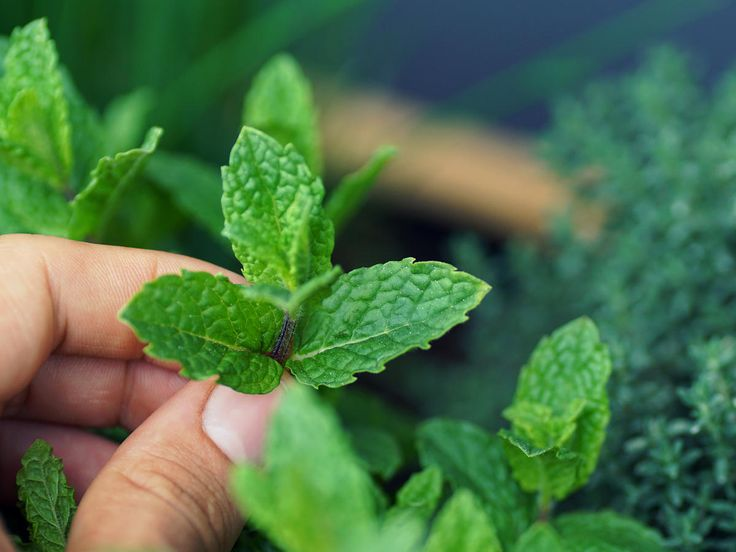
Source: Pinterest
Even though peppermint is a resilient plant, it still needs to be looked after and cared for. Here are some helpful tips for growing peppermint plants in your garden.
-
Prune the peppermint plant regularly
Since peppermint is a free-flowering plant, it requires regular trimming to keep its leaves aromatic and promote healthy development. Before and throughout the plant’s active growing period (late spring to midsummer), remove about half of the top growth. Stems that have become ‘woody’ or dry should be cut off immediately.
Every two or three years, you should prune and replant your peppermint. You can also harvest the blossoms to maintain the highest possible oil content in the leaves.
-
Give your plant sufficient light
Provided the soil is kept moist, peppermint thrives in full sun and can produce more beneficial oils in this environment. Even while they can grow in partial shade, full sun will bring out the best flavour.
-
Maintain soil moisture
Peppermint plants are much less likely to suffer from root rot than many other types of plants, and they prefer consistently moist soil. See to it that this quite parched plant receives an adequate amount of water.
-
Keep an eye out for pests
In addition to larger pests like rodents, peppermint plants are also effective at warding off smaller insects like insects and spider mites. The hose can be used to spray the pests off the plant.
Peppermint plant: Harvesting tips
If you want a larger harvest, be sure to follow these harvesting tips.
- It is essential to regularly pick mint plants to ensure their optimal health and flavour. Peppermint may be gathered as early as it sprouts in the spring, and the young leaves are more flavorful than the older ones. Peppermint leaves are best used fresh, but they can be refrigerated or air-dried for later use.
- Cut the stems about an inch above the ground just before they begin to blossom. You can get two or even three harvests from a single mint plant in a single growing season.
- You can also harvest the leaves whenever you require them.
- The plants can be grown inside so that you can access new leaves even in the dead of winter. Premature blossoming is the ideal time to harvest the leaves for drying. Keep the dried leaves somewhere dry and airtight.
Peppermint plant: Uses
You can grow peppermint for its attractive saw-toothed leaves and exquisite blossoms or for the spicy scent of crushing the leaves. Before learning about its medical uses, you might not have been a peppermint lover.
- Peppermint helps with gas and bloating, so it’s great for digestive issues. Peppermint, a carminative plant, helps the digestive system release gas by soothing muscles. Additionally, it has been used effectively to alleviate Irritable Bowel Syndrome.
- There is an inherent decongestant in peppermint. Menthol, one of the herb’s active components, thins mucus, making it easier to cough up phlegm. It’s great for calming a scratchy throat.
- Evidence from laboratory studies suggests that peppermint may help control blood sugar in people with type 2 diabetes who are still in the early stages of the disease.
- The findings are comparable to those for blood sugar, and one must exercise the same degree of caution.
FAQs
What is the lifespan of a peppermint plant?
To put it simply, peppermint is a plant that can live for many years. In many regions, it falls back for the winter and then re-emerges in the spring. Once planted, mint can thrive for up to ten years. The lifespan of a mint plant grown in a pot might easily exceed 5 years.
What growing conditions does the peppermint plant have?
Although peppermint is exceptionally resilient, it does best in a cold, damp environment with well-drained, porous, organically-rich soil. You can get a soil test done at your nearest extension office to determine what nutrients are in your soil and what pH it is. The ideal range for soil pH is around 5.5 to 6.0.
Are peppermint plants simple to maintain?
Peppermint requires little attention and looks great when you're done. You can plant it in the ground or containers, and it will flourish with minimal care. As a result of its invasive nature, peppermint is typically grown in pots. Peppermint is a fantastic herb with a wide range of applications regardless of how you grow it.
How quickly does peppermint grow?
A peppermint plant can expand from a rooted clipping to occupy a 4-inch container in roughly four weeks. A larger container or the ground will be required during the next four weeks. At a rate of expansion of 4 inches monthly, a new plant would reach a height of 2 feet within around 6 months.
Is peppermint toxic to pets?
It is not safe for pets to consume any part of the peppermint plant, especially the flowers, leaves or stems. These plants contain an abundance of oils, which are toxic to cats and dogs. Therefore, you should make sure that your pet does not eat any part of the peppermint plant.
Housing News Desk is the news desk of leading online real estate portal, Housing.com. Housing News Desk focuses on a variety of topics such as real estate laws, taxes, current news, property trends, home loans, rentals, décor, green homes, home improvement, etc. The main objective of the news desk, is to cover the real estate sector from the perspective of providing information that is useful to the end-user.
Facebook: https://www.facebook.com/housing.com/
Twitter: https://twitter.com/Housing
Email: editor@housing.com
